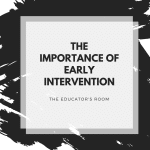The book Teach Like A Champion is one that many educators have read, or, at the very least, heard of. This especially rings true for our classroom leaders who teach in urban schools.
The first edition launched in 2010 by Doug Lemov, a teacher and administrator for the Uncommon Schools initiative, this book chronicles Lemov’s attempts to scientifically reveal and share the classroom techniques that worked for his fellow colleagues. The goal was to provide a pathway for his students to find their way to college, and that included teachers’ instructional choices. Lemov professes he spent plenty of time limiting these down to 49 techniques, which he shared in small clips of chapters and named them (“Right is Right” and “Vegas” being the most named and notorious, respectively). Accompanying each of the 49 techniques was a DVD video. Simple? Yes – on both accounts of “good” and “bad.”
In the updated, released in 2015 as Teach Like A Champion 2.0, Lemov expands his collection to 62 techniques, along with another DVD. Gone is “Vegas” (it was panned pretty provocatively by teachers, as it had the class go “oooh” and “aaaah” after a student answered a question correctly — all the time!) and a few other techniques, and, of course, several more have been added. So what’s my take on 2.0? A mixed bag, but overall positive.
“A mixed bag?!” You might be thinking, “teachers aren’t permitted to say negative things about one another! Didn’t you even write an article on that?”
Yes, I did, gentle reader. And thank you for remembering my article 3 years ago. You are a devoted follower of TER!
Let’s start with some of Teach Like A Champion’s problems…
The first is Lemov’s penchant for naming every single technique that he or any other person has ever used in the classroom. I can’t help but to read this book and think of how the Learning-Focused Schools model was shoved down my throat. Why? Because the administrators from many of the districts in Central Pennsylvania read Max Thompson’s books, loved the canned terminology, and decided to enact them in all our schools. It’s like we were watching our educational leaders drink the Kool-Aid and expect us to down it, too. I swear if I have to create another foldable, I’m going to snap.
Before shaming me in the comments section – did LFS have its merits? Yes. But I’m a firm believer that there’s an artistry to the framework of teaching. Lemov himself admits that. The problem is I see many an administrator reading this book, making it a requirement for their district (and teacher evaluations, of course – don’t believe me, read Amy Arnold’s excellent article on “Losing Sleep Over Charlotte Danielson“), and then finger-pointing at the educators whose students don’t make it to college. I’ll call this the “gotcha game.”
Next is something I’ll name “the foo-foo factor.” I can’t share how many techniques I read or observed in this book where I just stood up and yelled “GET ON WITH IT ALREADY!” How many minutes are wasted on this technique?! By my calculation, I have 43 minutes for 180 days of school, leaving me with exactly 129 hours of instruction to take my students on the most incredible, American, historical journey from 1600-1860. This includes trying to have some fun, creativity, projects, writings, interruptions, snow days, proctoring of standardized tests, and so on. I don’t want to be spending a measurable fraction of this time on asking 17 kids the right answer to a question. Right is Right. Next!
Now, onto the good…
For many new teachers or those who have been struggling with a plateau or not doing so well on their evaluations, this book is a great resource. It’s simple. It’s easy. Flip through to different chapters and bolster the weaknesses in pedagogy (author’s note: if a teacher hasn’t found an area of weakness, ask a former student).
And, as I mentioned, there are also videos to watch the practice unfold (any teacher will admit we’re terrible at watching others teach). Additionally, there are lesson plans and other e-files one can access for help.
As for me, I’m not shallow or conceited enough to believe I have nothing to improve. So, I dove in head-first into the book pursuing what I can use to upgrade next year’s Mr. Miller 11.0. Here’s what I found, thanks to this resource:
- Technique 8: Culture of Error – I noticed at a point last year that I was missing some students hands in the air, and it was because they were afraid of finding the wrong answer. Lemov’s chapter on Error is alone probably worth the price of the book, as all teachers should have a cooperative learning environment that encourages mistakes, which includes differentiating how we ask questions of our students, amping up the rigor for some, the scaffolding for others, and praising students for at least giving it a try. How many of us overlook that?
- Technique 20: Do Now – not particularly a Lemov invention, per se, but I’ve recognized that I’ve loosened my class atmosphere at the beginning of class. That’s because, since my school continues to grow and add students, we haven’t increased the amount of time students have to travel between classes (further and through busier hallways). We also don’t have bells, which causes students to arrive at varying times, curtailing my 43 minutes down to about 40. But there has to be a creative way for me to incorporate a – bellringer, warm-up, do-now, or whatever else you want to call it – that the first student and last student arriving can both work on, even momentarily. That’s part of my goal for myself this year.
- Technique 33: The Cold Call – this chapter was very enriching, as I had a great conversation with some colleagues on how they address participation. I personally set aside 5% of the overall grade for it, which includes in-class and online participation. This part of the grading process is also student-led. However, there are always shy and introverted students, and I’m continuously cognizant of keeping them involved, notably through speaking with some introverted students (through well-composed emails). Coupled with creating a better learning environment through error, I feel I have some great ideas to transform my classroom for them (and including them).
- Additionally, for anyone lacking classroom management, the book has a wealth of resources. This is one of my strong points, so it was a quick gloss for me. Indeed, any teacher’s strengths can also be reaffirmed by seeing them in print and proclaiming, “I already do that!”
I would like to recommend this book to any teacher who is trying to improve, especially those at the starting point or transformation points in their career. For any teacher who’s constantly a learning-reader, there’s something for them here, too. Administrators, you can also feel free to read – please, just don’t get caught-up in all the “foo-foo.”







